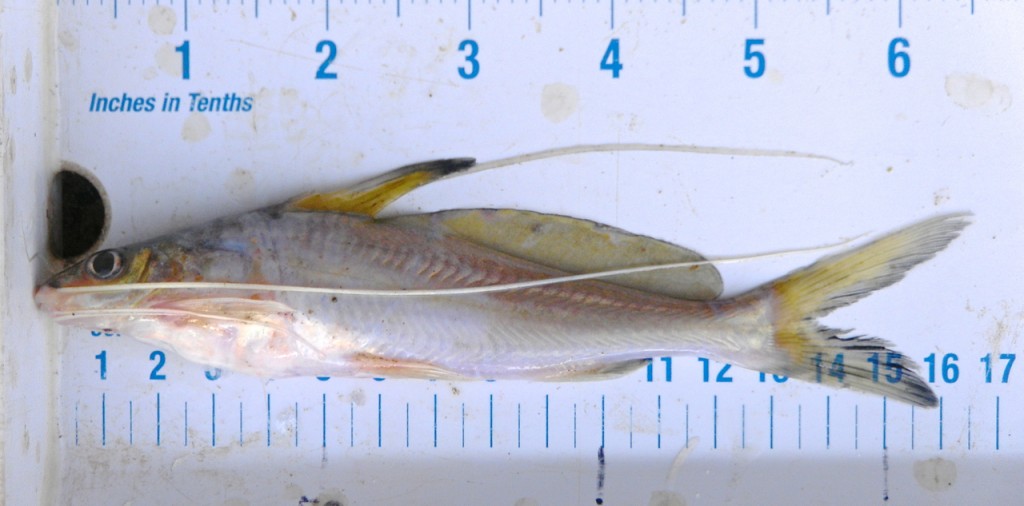Friday May 22, 2020
 Today’s Flashback Friday traces the surprising evolution of the adipose fin in fish.
Today’s Flashback Friday traces the surprising evolution of the adipose fin in fish.
The adipose fin has been both underrated and, it now seems, misunderstood. Its appearance hasn’t helped matters much, as it often consists of just a fleshy nub on a fish’s back between the dorsal fin and tail (such as in salmonids). This has lead to theories that the adipose fin is merely the vestigial remnant of a once useful, larger fin. Researchers have also long assumed that such a fin with no obvious utility or function must have evolved only once, then just happened to stick around throughout history as a kind of accident. But a recent study by researchers at the University of Chicago and the University of Kansas proves otherwise, demonstrating that the adipose fin has, in fact, arisen multiple times in the evolution of bony fishes (Stewart et al. 2014). Published in the journal Proceedings of the Royal Society B, their findings suggest this overlooked fin may be more important than once thought – although its actual purpose still remains unclear.
The scientists used genetic data from more than 200 fish species, as well as information from the fossil record, to construct an evolutionary tree showing the relationships among fishes with and without adipose fins. Using statistical models, they predicted when the fins appeared, and in which species. Their results indicate adipose fins arose at least twice – once in the catfishes, and once in another group of fishes including salmon, smelt, and lanternfishes – and may have evolved even more times. The team also documented an array of skeletal structures inside some adipose fins, from spines to fin rays, which also arose independently. The researchers’ discovery means that adipose fins are actually an example of convergent evolution, in which two animals hit upon a similar trait by separate evolutionary pathways, rather than inheriting it from a shared ancestor. Thus, the evolution of the adipose fins in salmon and catfish is a bit like the evolution of wings in birds and bats.
That a trait evolved multiple times doesn’t necessarily mean it is advantageous. But the fact that adipose fins have also stuck around for millions of years suggests they serve some function, the authors maintain. Other scientists have found that the adipose fin contains nerve tissue (Buckland-Nicks et al. 2011), and also discovered that it in some species the fin may act as a flow sensor for the fish’s tail in turbulent water (Reichmen and Temple 2004). The role of the fin may vary across the more than 6,000 species in which it’s found, as it hardly represents a specialized adaptation. Adipose fins are found on fishes both large and small, living in habitats as different as rivers and the deep sea. The fins themselves also take on a range of sizes, including the notably large adipose fin found in the catfish Mystus albolineatus shown above, which lives in the Mekong River basin. Whatever its purpose, one thing is now clear – this fin is more than just a fluke.
This post featured in our weekly e-newsletter, the Fish Report. You can subscribe to the Fish Report here.
